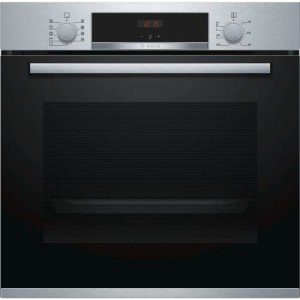The Rise of Built-In Ovens: A Seamless Approach to Modern Cooking
In modern kitchens, where style looks blend seamlessly with performance, one home appliance sticks out as a true game changer: the built-in oven. As house owners and chefs alike continue to look for ingenious options that enhance their cooking experience, built-in ovens have actually ended up being significantly popular. This article explores the advantages, factors to consider, and patterns surrounding built-in ovens, highlighting why they are an important feature in modern cooking spaces.
What is a Built-In Oven?
A built-in oven is a cooking area device designed to be integrated into the cabinets of a kitchen instead of standing alone. Unlike conventional freestanding ovens, which can be moved and placed anywhere, built-in ovens been available in numerous styles and sizes to fit specifically within designated areas. Available in single or double configurations, these ovens offer a streamlined look that matches modern cooking area designs.
Advantages of Built-In Ovens
1. Space-Saving Design
One of the most appealing advantages of built-in ovens is their space-saving style. By incorporating the oven into cabinetry, you can release up valuable counter and floor area. This is particularly advantageous in smaller kitchen areas, where taking full advantage of room is essential. Built-in ovens can be installed at eye level, making them more available and minimizing the need to flex down.
2. Aesthetic Appeal
Built-in ovens add to a smooth and cohesive kitchen design. Offered in different finishes-- such as stainless steel, black, white, and custom-made kitchen cabinetry-- they can mix seamlessly into the general decor. This aesthetic appeal enhances the kitchen area's visual consistency and raises the space, producing a contemporary and sophisticated environment.
3. Improved Functionality
Numerous built-in ovens come geared up with sophisticated cooking innovations, such as convection cooking, steam ovens, and smart features. built in electric oven enable versatile cooking options, making it simpler to accomplish professional-level results at home. Smart built-in ovens can even link to Wi-Fi, making it possible for users to manage the oven remotely, get notifications, and gain access to a variety of cooking programs and dishes.
4. Improved Ventilation
Since built-in ovens can be integrated with kitchen area hoods and ventilation systems, they can help maintain better air quality and minimize cooking odors. This is particularly considerable for those who love to prepare with fragrant spices and ingredients, as an efficient ventilation system can keep the kitchen comfy and inviting.
5. Customization Options
Built-in ovens offer a wide variety of modification alternatives to fit individual cooking styles and requirements. From professional-grade devices with multiple cooking modes to compact designs for smaller kitchen areas, house owners can pick the oven that fits their specific requirements. Numerous producers likewise provide customizable front panels, permitting you to match the oven's appearance to your kitchen cabinetry for a really combined look.
Factors to consider When Choosing a Built-In Oven
While built-in ovens have many advantages, there are very important factors to consider to keep in mind before buying:

1. Price
Built-in ovens usually come with a higher rate tag than their freestanding equivalents due to their style and installation requirements. It's important to factor in both the cost of the oven and any extra expenditures associated with cabinets adjustments or setup.
2. moved here
Setting up a built-in oven often requires professional assistance, especially if you need to modify existing cabinetry. Make sure that you consider any costs related to installation, consisting of labor and possible kitchen cabinetry adjustments.
3. Size and Dimensions
Before buying a built-in oven, measure the designated space accurately to guarantee a correct fit. Built-in ovens can be found in different sizes and setups, so selecting one that lines up with your needs and kitchen area design is vital.
4. Way of life and Usage
Consider your cooking routines and requires when choosing a built-in oven. If you regularly host large gatherings, a double oven might be more advantageous. On the other hand, if you have a compact kitchen area, a single-wall oven might be enough.
Trends in Built-In Ovens
The kitchen area device market is continually developing, and built-in ovens are not exempt from emerging patterns. Some current patterns consist of:
Smart Technology Integration: With the rise of wise home technology, built-in ovens now often feature connectivity choices. This allows users to monitor cooking progress and adjust settings via mobile apps.
Energy Efficiency: As sustainability ends up being a priority, lots of producers are purchasing energy-efficient built-in ovens that decrease energy intake while preserving performance.
Multi-functional Designs: Built-in ovens now provide functions such as air frying, slow cooking, and steaming, providing adaptability that meets a large range of cooking approaches.
Conclusion
Built-in ovens certainly represent an ideal mix of design, function, and benefit in today's kitchen areas. As more property owners choose this contemporary solution, the focus moves to producing a cooking area that is as aesthetically pleasing as it is practical. Whether you are constructing a new home or renovating your cooking area, thinking about a built-in oven might elevate your cooking experience and change your kitchen into a trendy and functional sanctuary. With a variety of options readily available and ongoing developments in technology, built-in ovens stay a standout option for both amateur cooks and culinary lovers alike.
